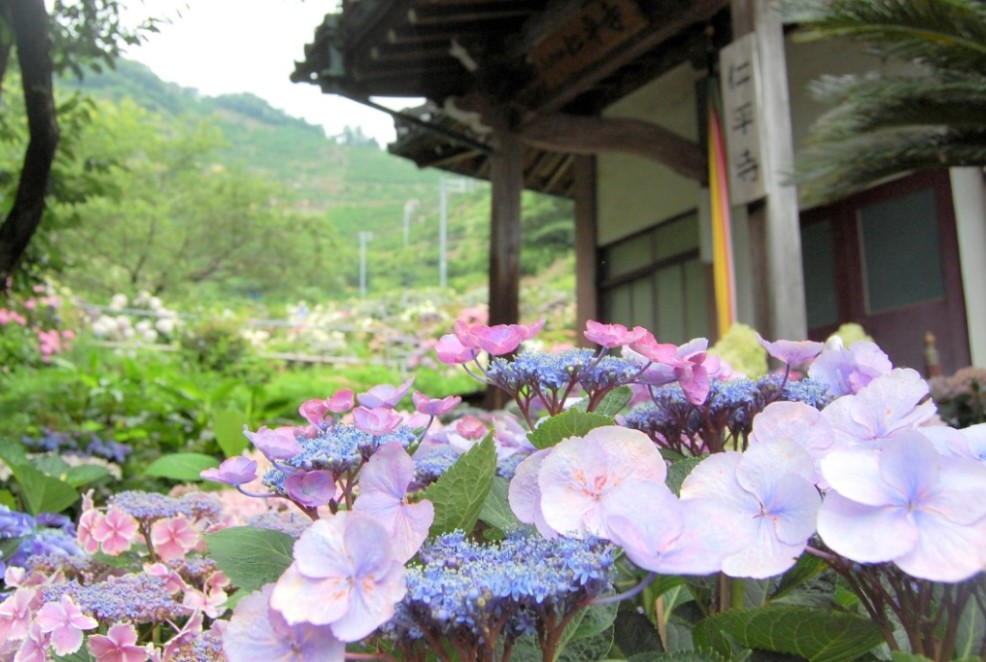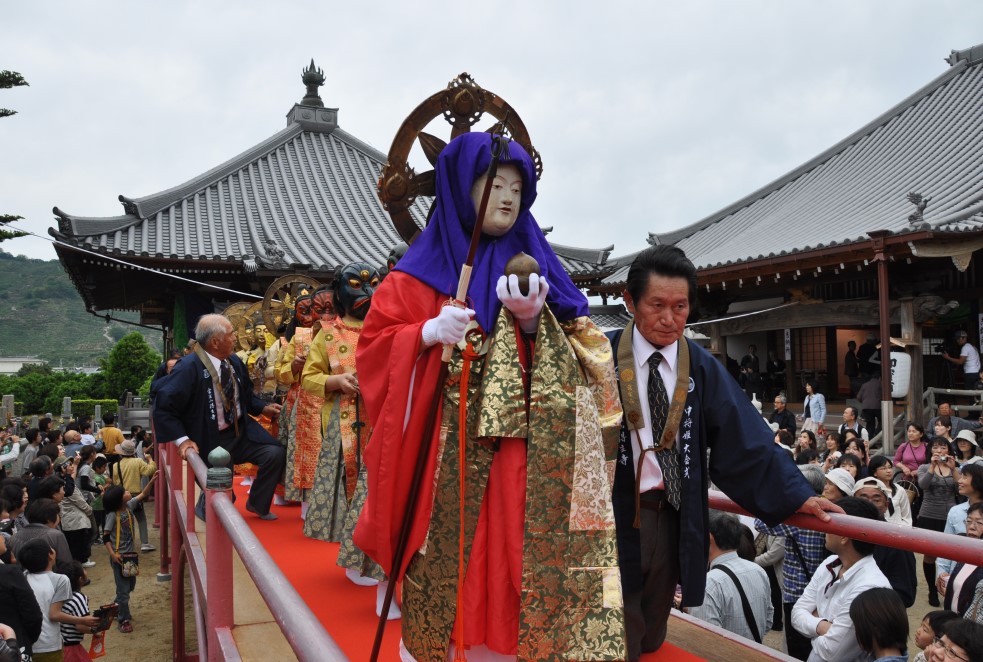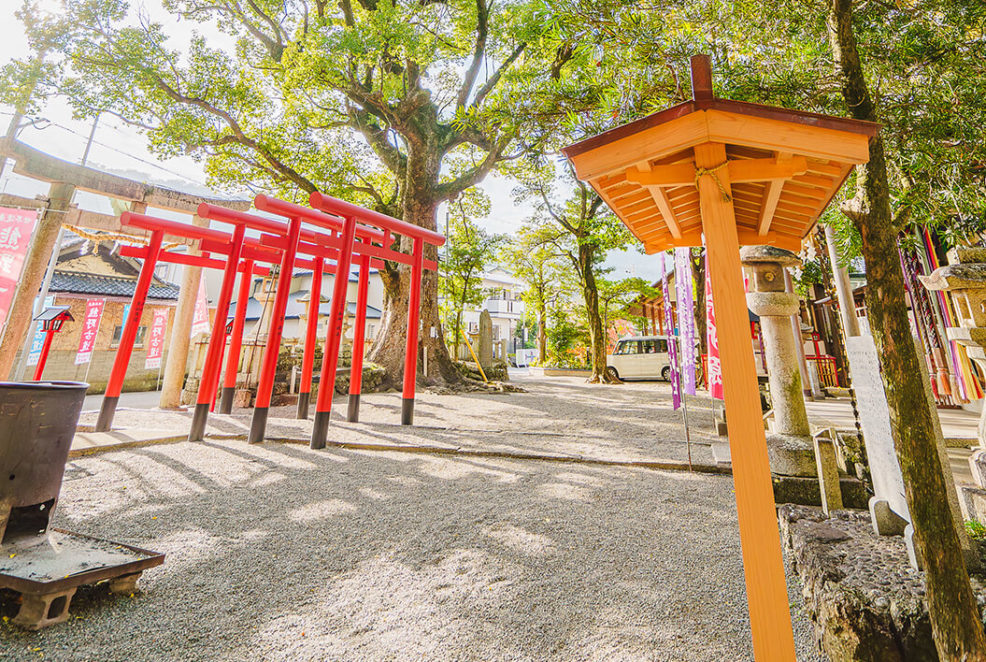Kii-no-kuni-arida
CULTUREThis is a list of “Kii-no-Kuni ARIDA” search by theme.

Ninpei-ji Temple
Located in the Masago Valley in the western part of Itoga-chou, the temple was originally called Masago-dera and once had a complex of seven halls, but declined and was revived during the Ninpei era (1151-3). Although it is an ancient temple, it is currently without a resident monk and houses ancient statues such as the main Yakushi Nyorai statue (from the late Heian period or Kamakura period), as well as statues of Amida and Kannon in a small hall. Additionally, it is home to the city-designated cultural asset, the Tobatsu Bishamonten statue (from the Kamakura period). The temple grounds are adorned with hydrangeas and white wisteria trees. The "Ninpei-ji temple", beloved as the Hydrangea Temple, welcomes the peak bloom of hydrangeas in early June, with approximately 1,000 hydrangea bushes in full bloom on the grounds. Local caretakers nurture potted hydrangeas and display pressed hydrangea flowers.

Tokushou-ji Temple
In the year 747 (Tenpyou 19), during the Nara period, the Minister of the Right, Fujiwara no Toyonari and his wife prayed at Hase-dera temple and gave birth to Princess Chuujou. When the princess was 3 years old, her mother, Murasaki no Mae, passed away, and when she was 7, her father, Toyonari, took Teruyo no Mae as his second wife. As the princess grew, she became exceptionally beautiful, intelligent, and excelled in everything she did. This led her stepmother to grow resentful, and at the age of 13, she secretly ordered a retainer named Ito Harutoki to assassinate the princess at Mount Hibari-yama in Kii Province. However, Harutoki was moved by the princess's virtue and instead called his wife from the capital to protect and raise the princess. Three years later, in the year 761 (Tenpyouhouji 5 ), Toyonari returned from a hunting trip and tearfully reunited with the princess. However, at the age of 17, she shaved her head and took the name Hounyo at Taima-dera temple, where she also wove the famous Taima Mandala. In the year 775 (Houki 6), on the 14th day of the second month, she was welcomed by 25 bodhisattvas and closed her tumultuous life at the age of 29. At Tokushou-ji Temple, every year on the princess's memorial day, which falls on May 14th, a special ceremony called the Raising Ceremony is held. During this event, elementary school students dress up as the 25 bodhisattvas and parade from the Founder's Hall to the Main Hall, a valuable tradition that offers insight into ancient Buddhist culture.

Itoga Inari-jinja Shrine
"Honcho-saisho Inari Shrine" is the oldest Inari shrine in Japan, with its name displayed on the front torii gate. Inside the shrine grounds, there are estimated to be 500 to 600-year-old camphor trees. There used to be four trees, but now only three remain, with one in the northwest having withered. These three camphor trees are a rare presence and have been designated as natural monuments of Arida City. Walking the "Kumano Kodo" from the shrine and climbing the "Itoga Touge" will lead you to the "Inabane Shrine," where it is said that the Inari god descended. From February to March, you can enjoy the scenery of lined torii gates and Kawazu cherry blossoms.